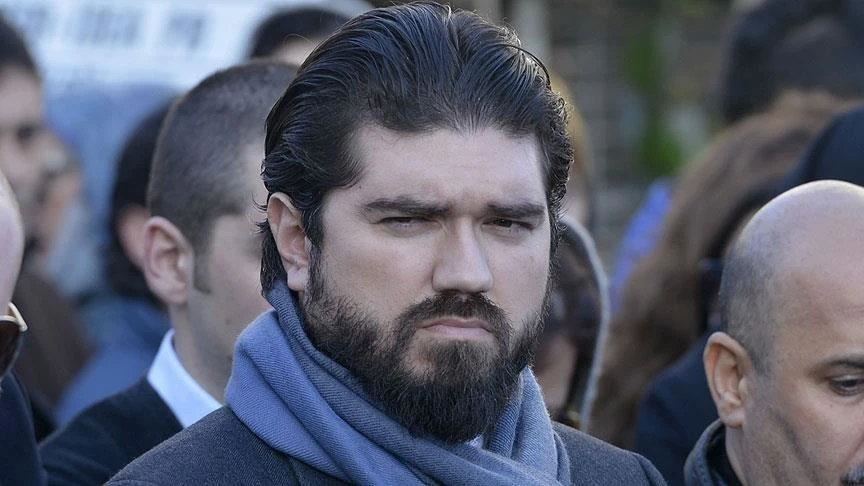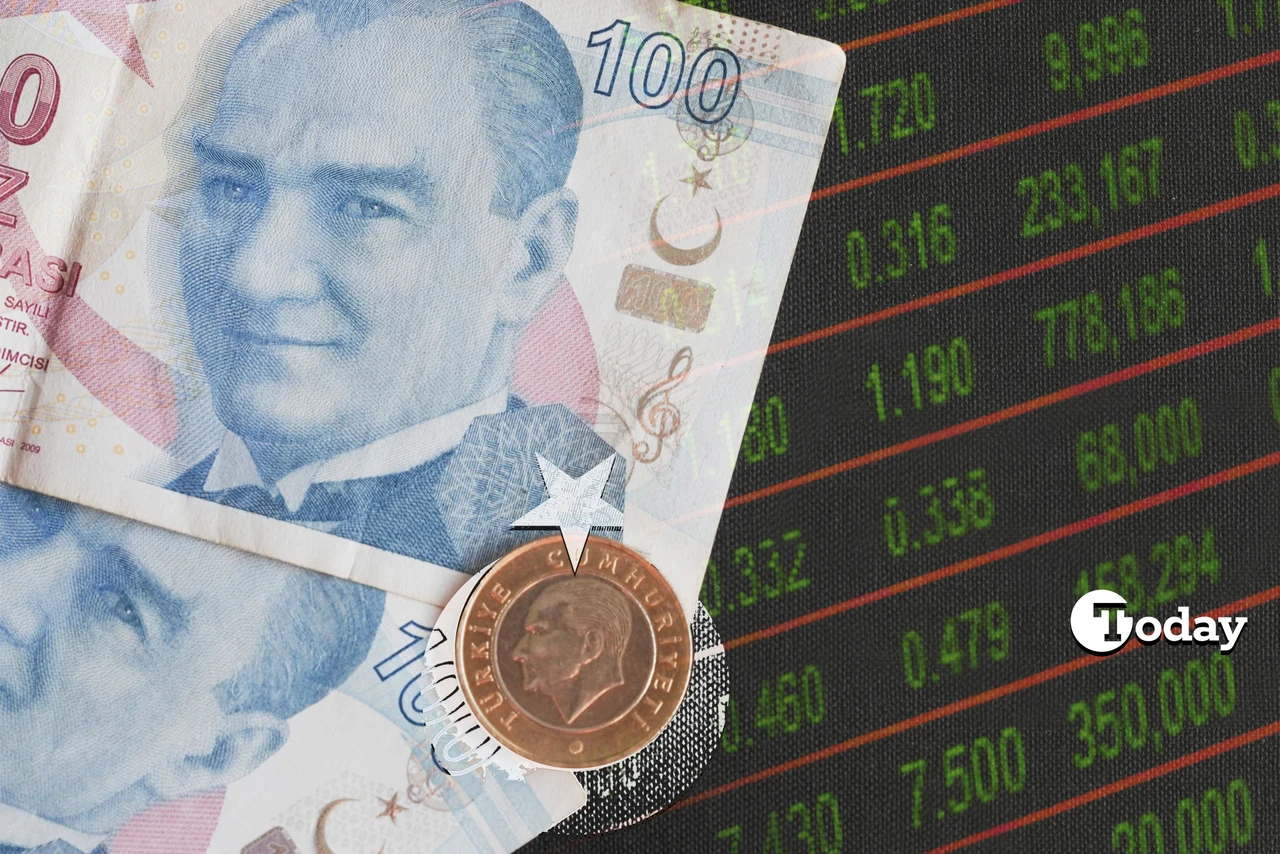Must-see artifacts at Ankara Museum of Anatolian Civilizations
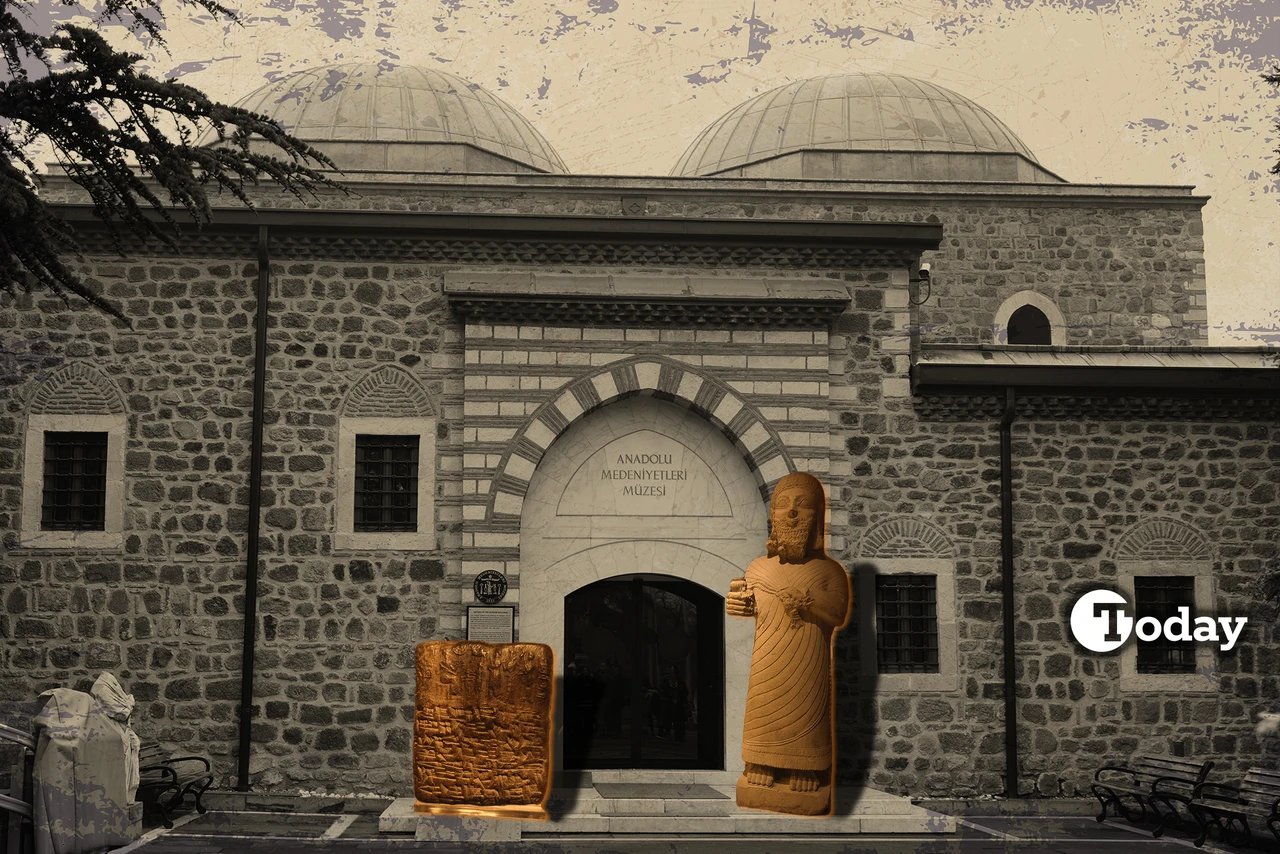 Museum of Anatolian Civilizations, Ankara, Türkiye.
Museum of Anatolian Civilizations, Ankara, Türkiye.
The Museum of Anatolian Civilizations was established in 1921 to showcase Türkiye‘s deep-rooted, multi-layered civilizational history.
The Anatolian peninsula remains one of the key locations of the world where humans first began agriculture, wrote legal codes, and operated monetary systems, all of which are cornerstone contributions to human civilization at large.
The museum’s collection includes artifacts ranging from the Paleolithic era and continues semi-chronologically through the Neolithic and Early Bronze Age, Iron Age, Sumerian, Hittite, Phrygian, Urartian, Assyrian, Hellenistic, Roman, Byzantine, Seljuk, and Ottoman periods.
The museum curates and maintains a collection of roughly 200,000 works. Here are the top 10 things not to miss at the Museum of Anatolian Civilizations.
1) Bull scene
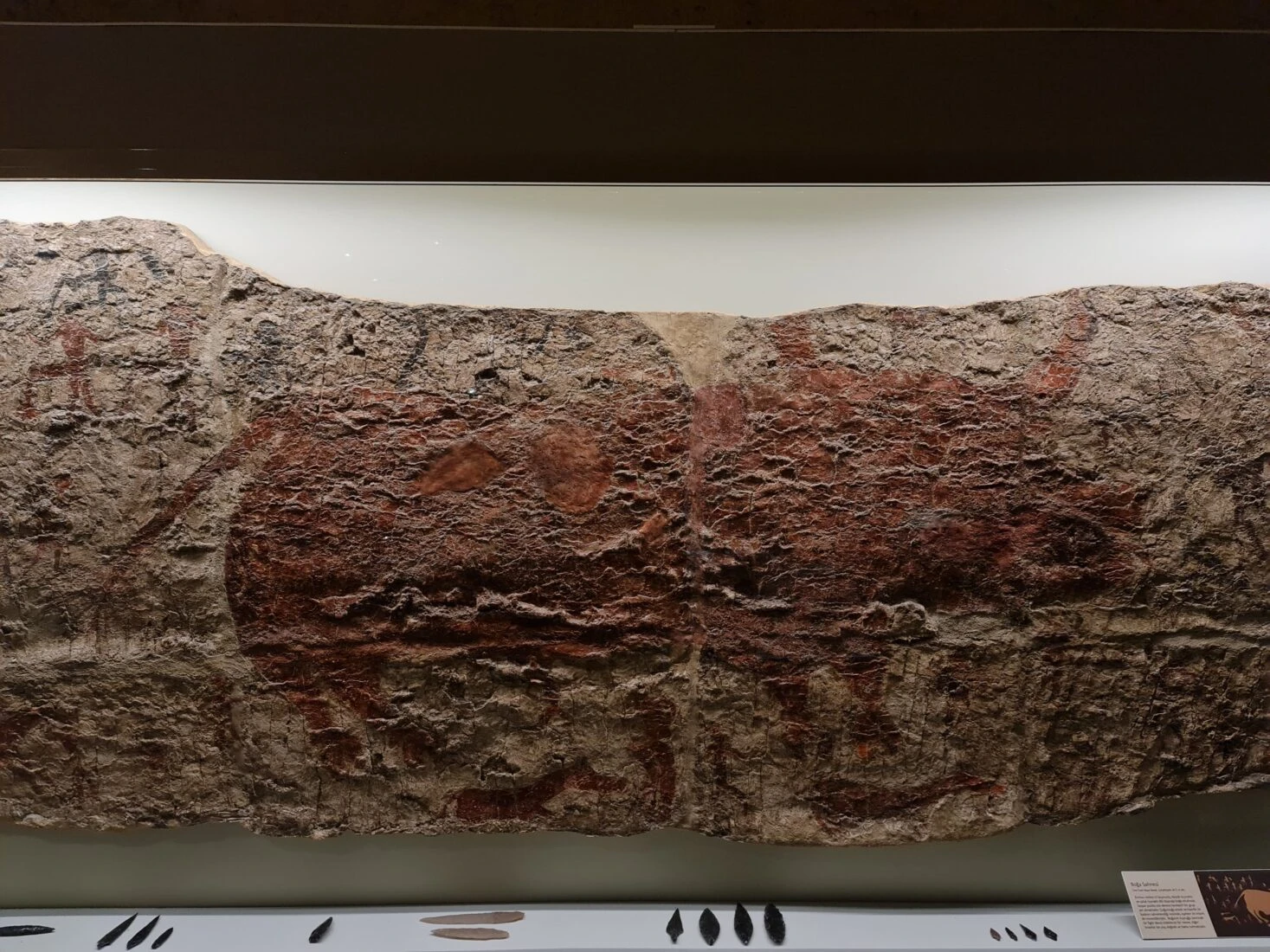
Believed to be dating back to 6,000 B.C.E, the bull scene mural was found at the Catalhoyuk Neolithic site in Konya province.
Catalhoyuk’s settlement began roughly 7,500 B.C.E and serves as one of the first examples of proto-city developments in human history. The site is comprised of two main mounds with mud-brick houses that are conjoined, without streets, and accessed through the roofs.
Scientists have used the site to study the first transition of humans to agriculture-based societies. Yet the ancient residents of Catalhoyuk were also known and notable hunter-gatherers.
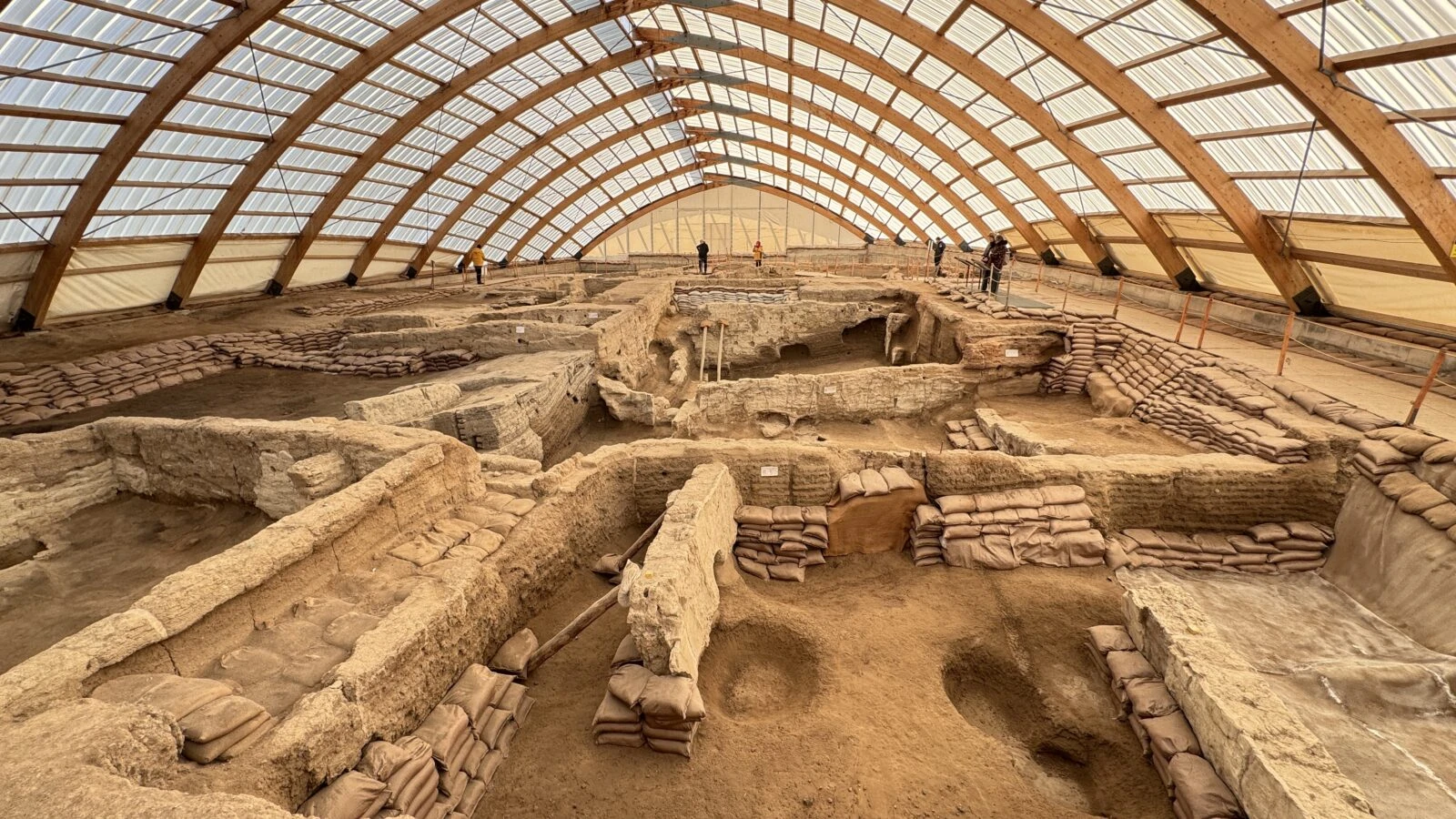
2) Anatolian Mother Goddess
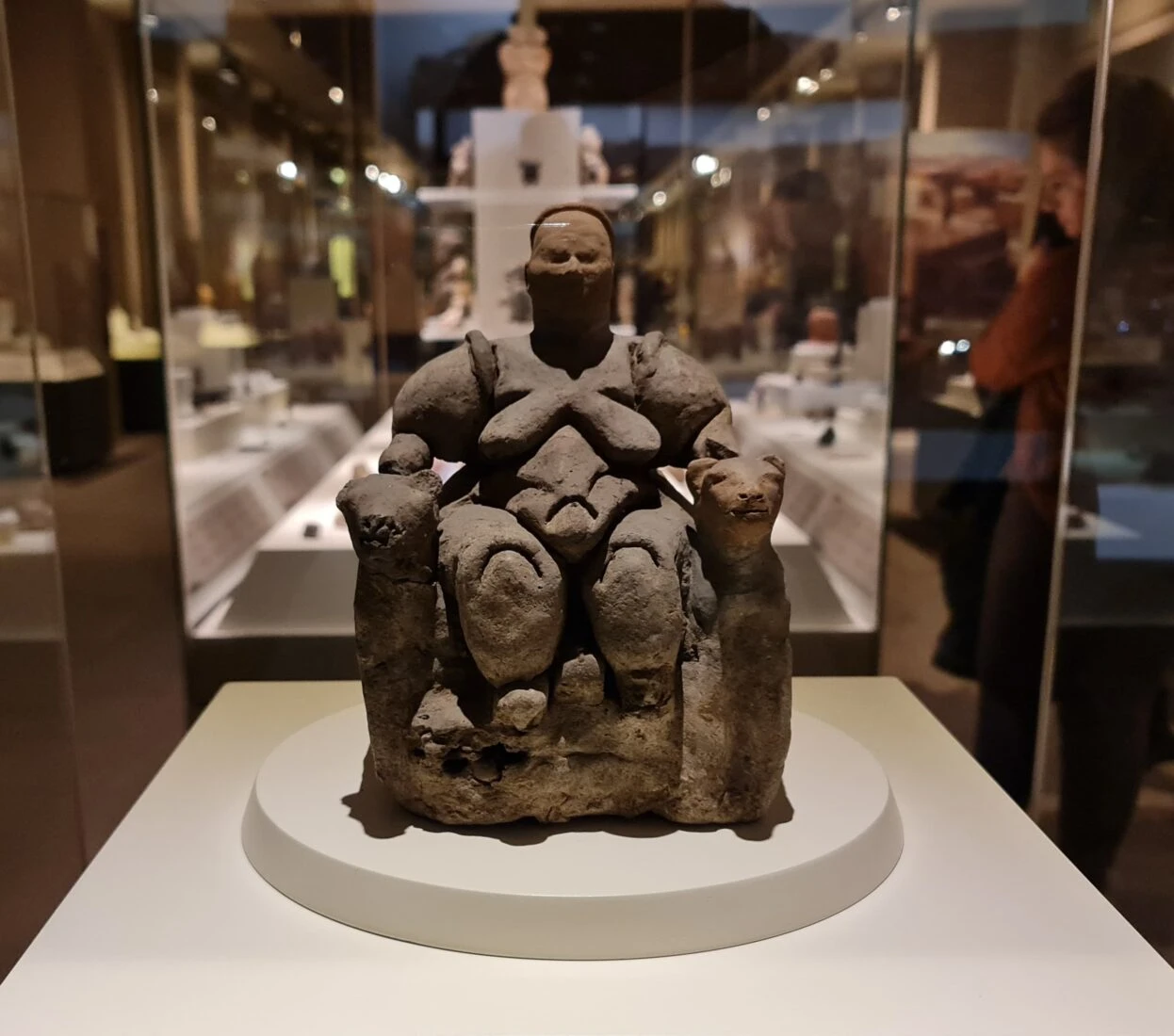
Found throughout Anatolia is the mother goddess, representing agriculture, human fertility, and motherhood. The mother goddess on display is made from terracotta and dates to 5,750 B.C.E.
This artifact also comes to the museum from the Catalkoyuk settlement, revealing that the ancient civilization may have had complex religious narratives. Other theories also suggest it could be an honorable elder in the community or just simply a form of art for the sake of art.
The baked clay figurine is one of over 2,000 similar artifacts found, although it is rarer to find figurines completely intact such as this one.
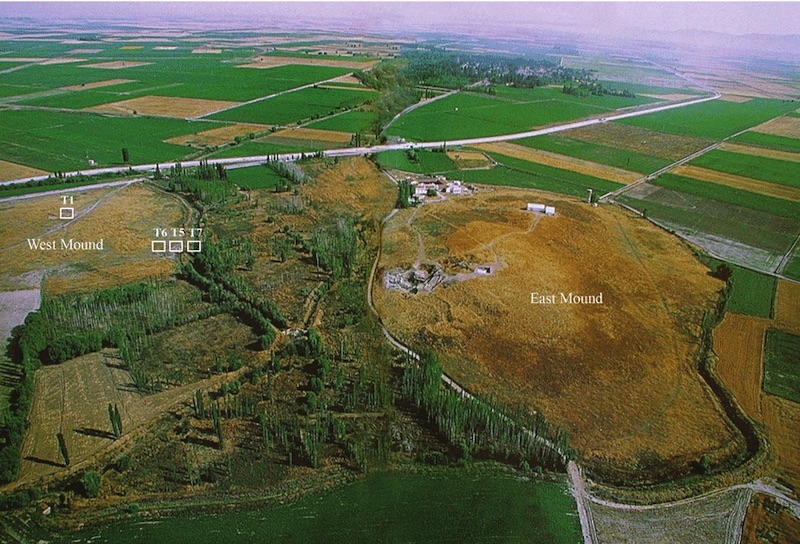
3) Anatolian Sundisks
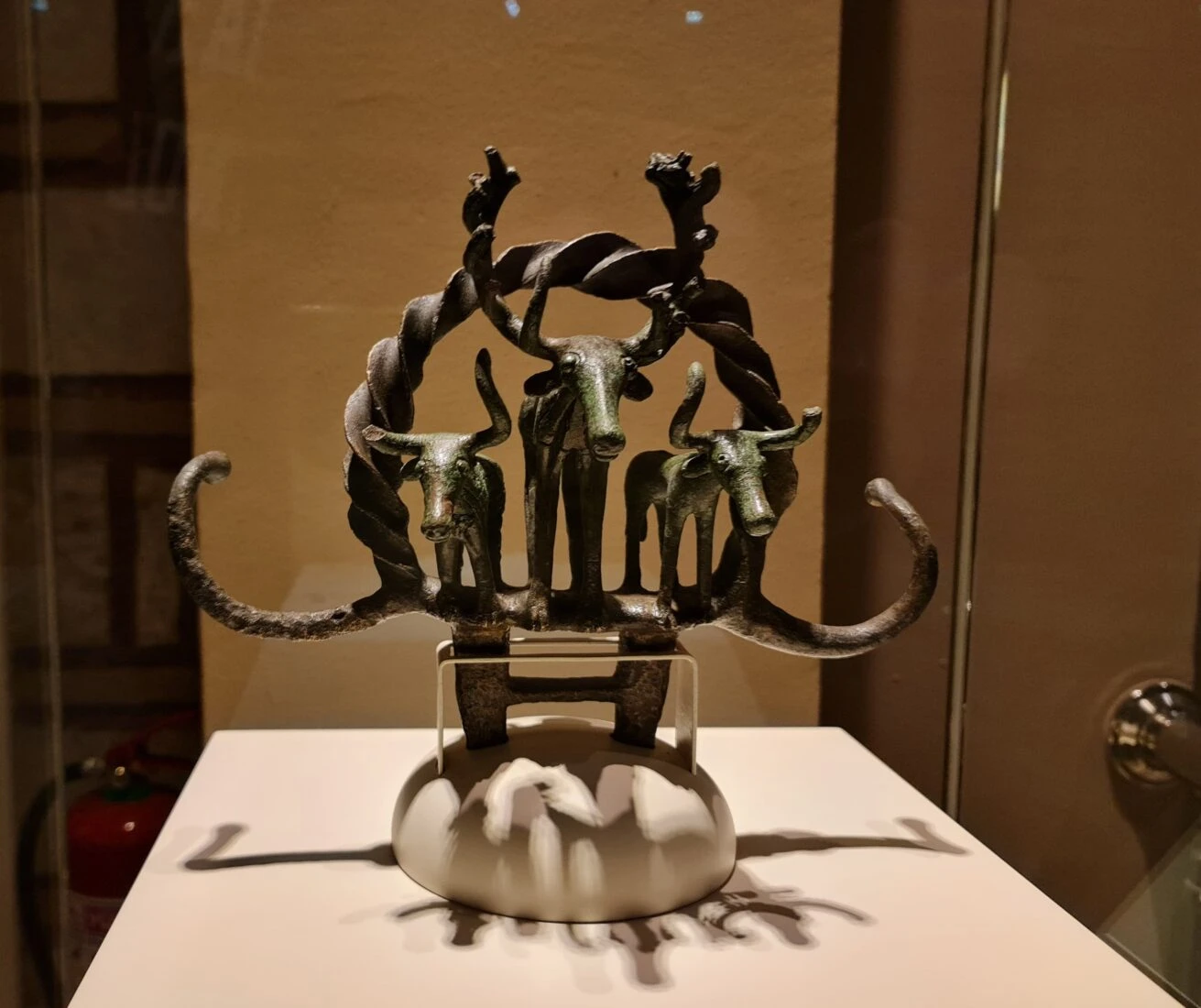
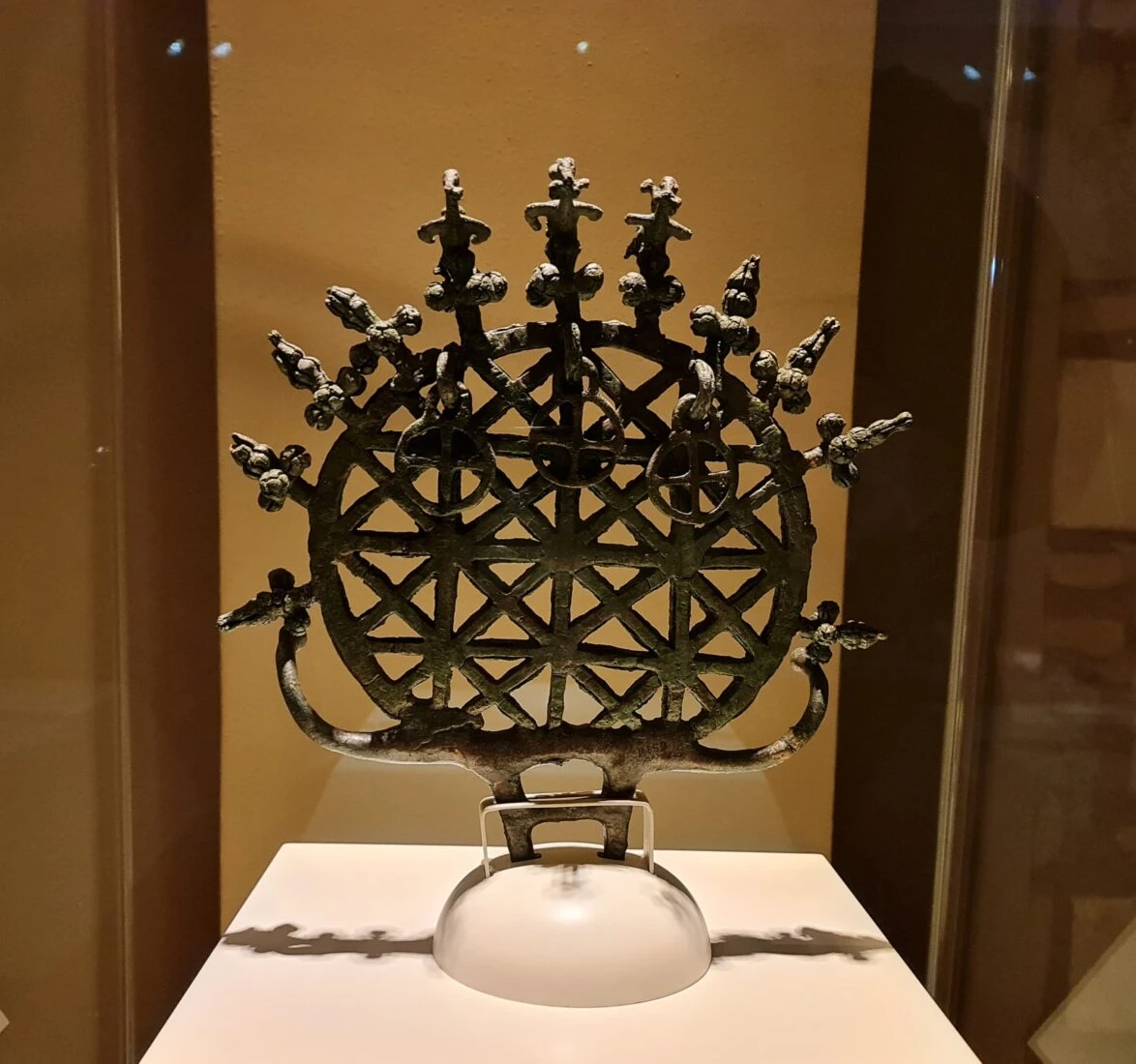
The Anatolian sundisks are believed to be religious motifs used through the Bronze Age and Iron Age by the Hittite, Phrygian, and Lydian civilizations. The museum houses several religious motifs often depicted with deer.
Deers still to this day hold a high stature in Turkish and Turkic mythology. Often believed to be representations of the supernatural, foretellers of good or bad fortunes.
Sundisks are one of the symbols for the cities of Ankara and Anatolia. The University of Ankara’s emblem is inspired by the Anatolian sundisk as well.
The bronze disks are believed to be associated with a kind of sun worship, and there are several theories as to how they might have been used during pagan celebrations.
4) King Mutallu’s statue
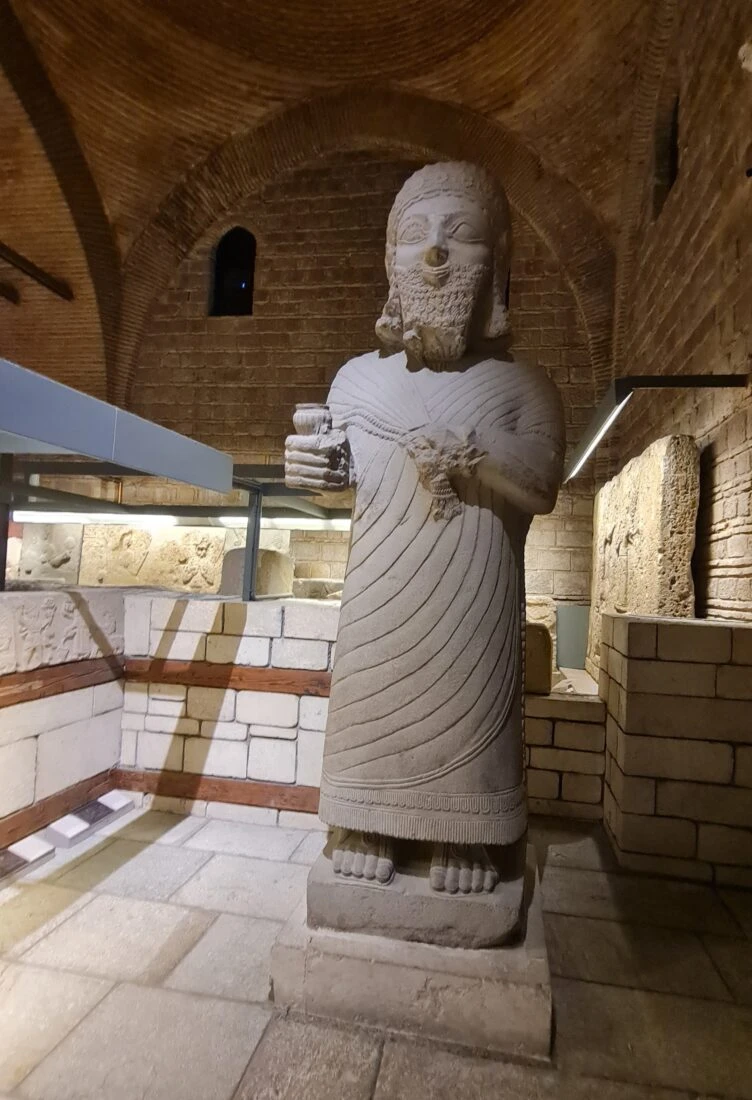
Found at the entrance of the museum’s main hall is the statue of King Mutallu of Kummuh (700 B.C.E), who governed a small kingdom in modern-day southeastern Türkiye on the banks of the Euphrates River during the Iron Age (14th century B.C.E).
King Mutallu is mentioned in both ancient Egyptian and Hittite sources, relying on diplomacy to keep his domains as well as military might. However, the king may have been self-exiled before an Assyrian takeover and spent the rest of his days in Babylon.
At a height of 3.2 meters, the limestone statue towers over visitors.
5) Urartu Column
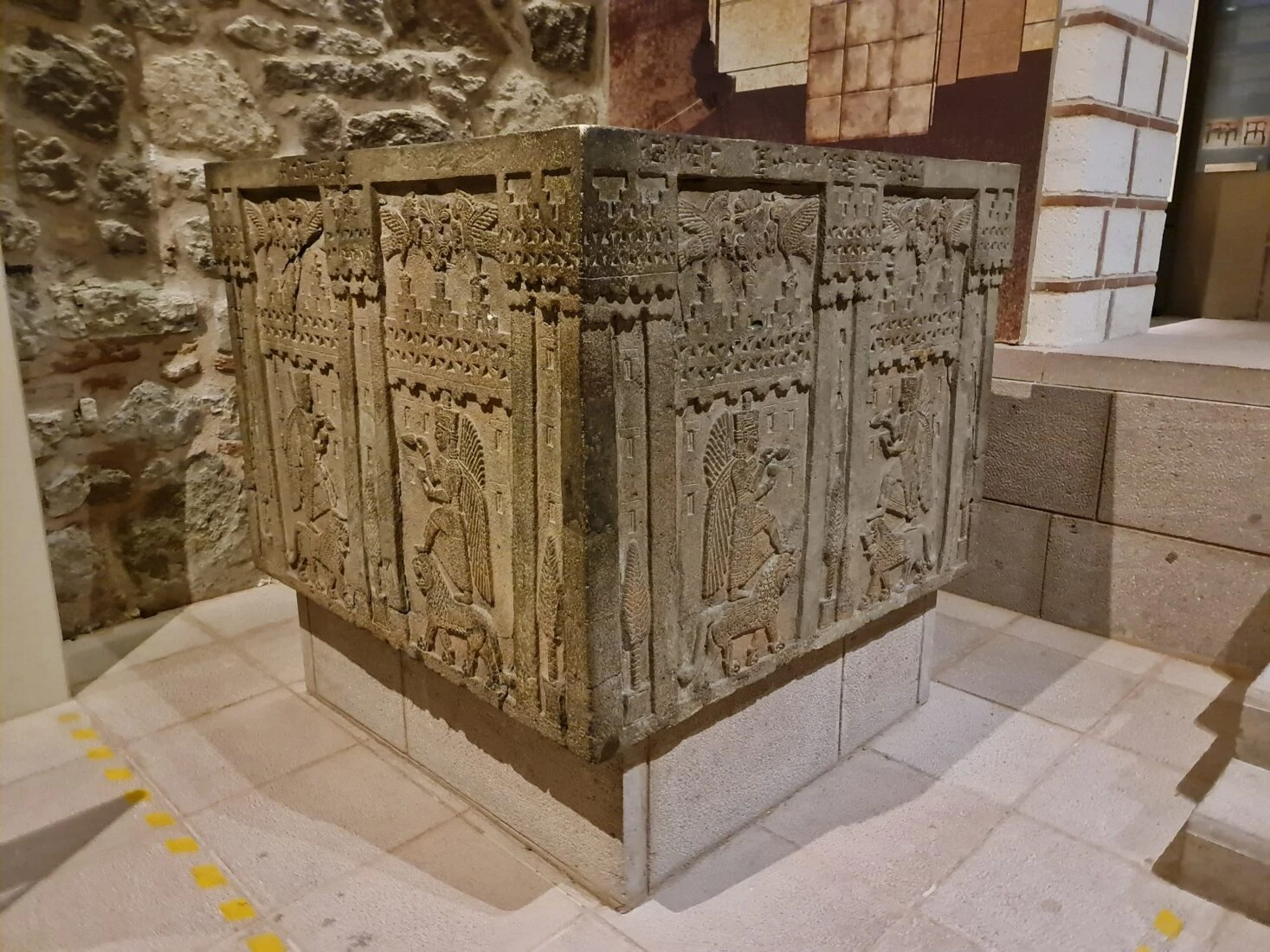
The Urartu’s, sometimes referred to as the Kingdom of Van, were based in eastern Türkiye with their civilization stretching into modern-day Armenia, Georgia and Iran. It remains to be a mystery, as the civilization pretty much disappeared around 600 B.C.E.
The Urartu column was founded in the temple built by the King Rusa II for the god Haldi. The architectural feature is one of the pioneers of columnae caelatae samples of Hellenic architecture in Anatolia.
The “Tree of Life” depiction is found on all four faces of the column.
6) Cuneiform Tablets
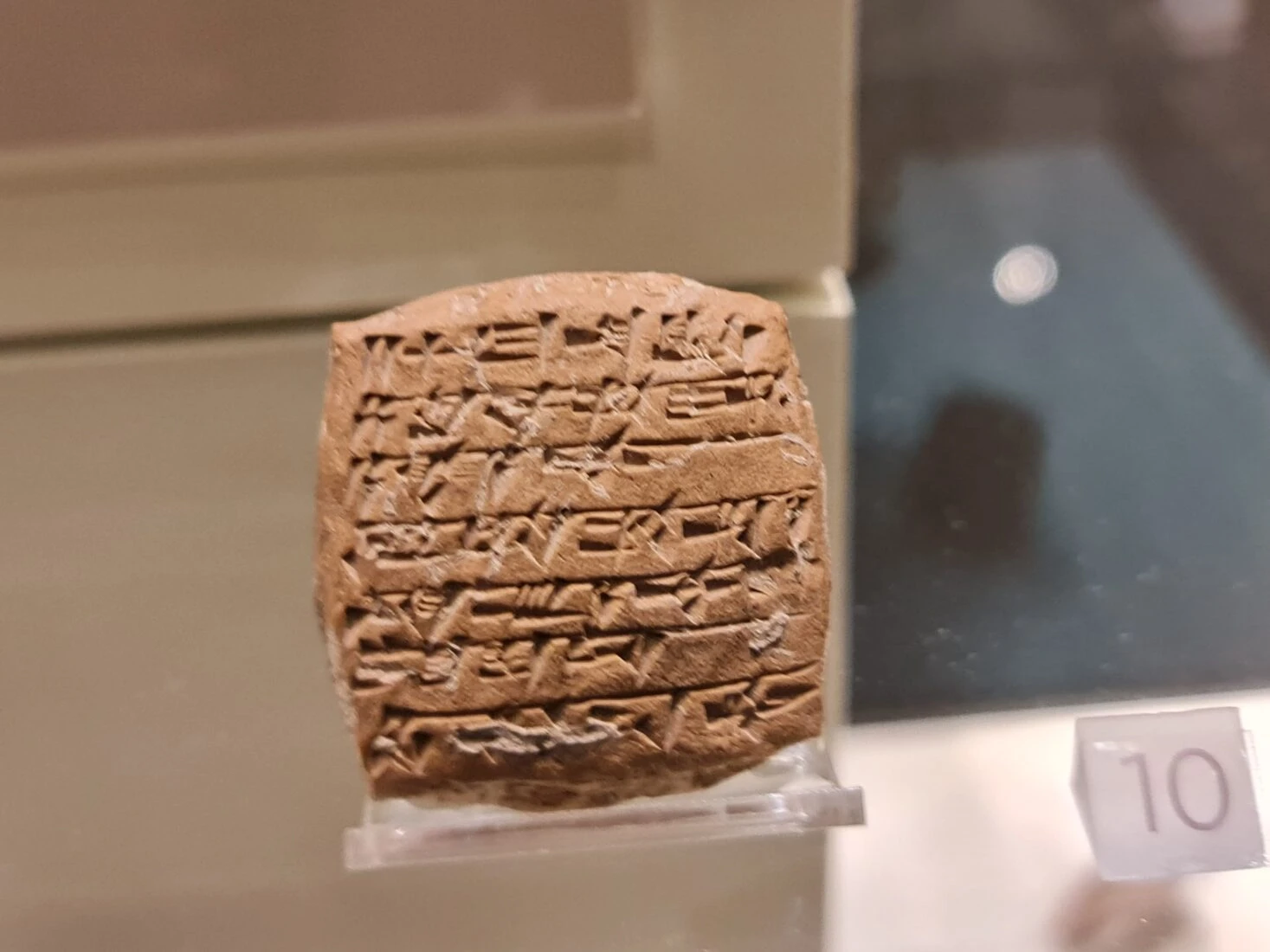
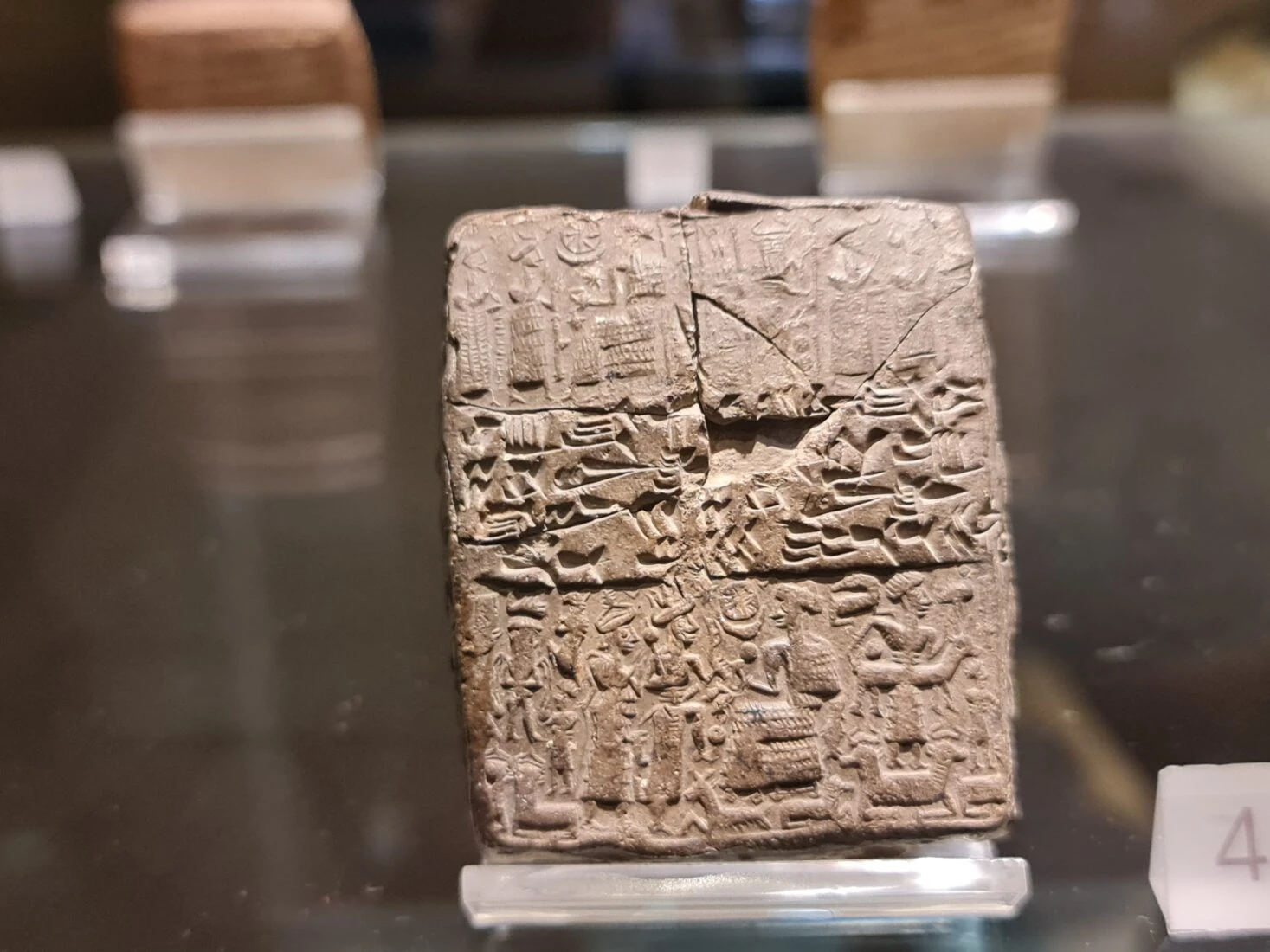
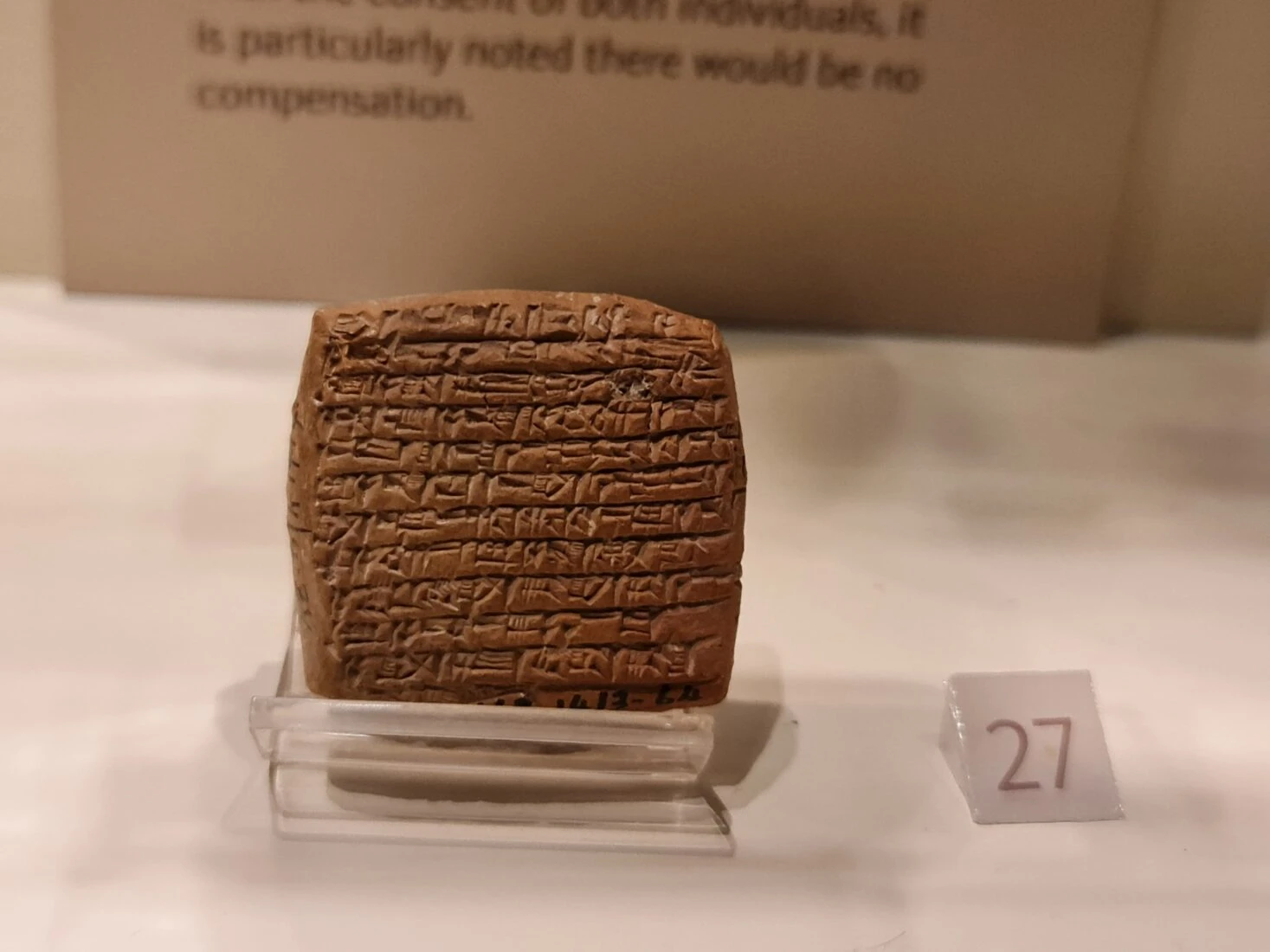
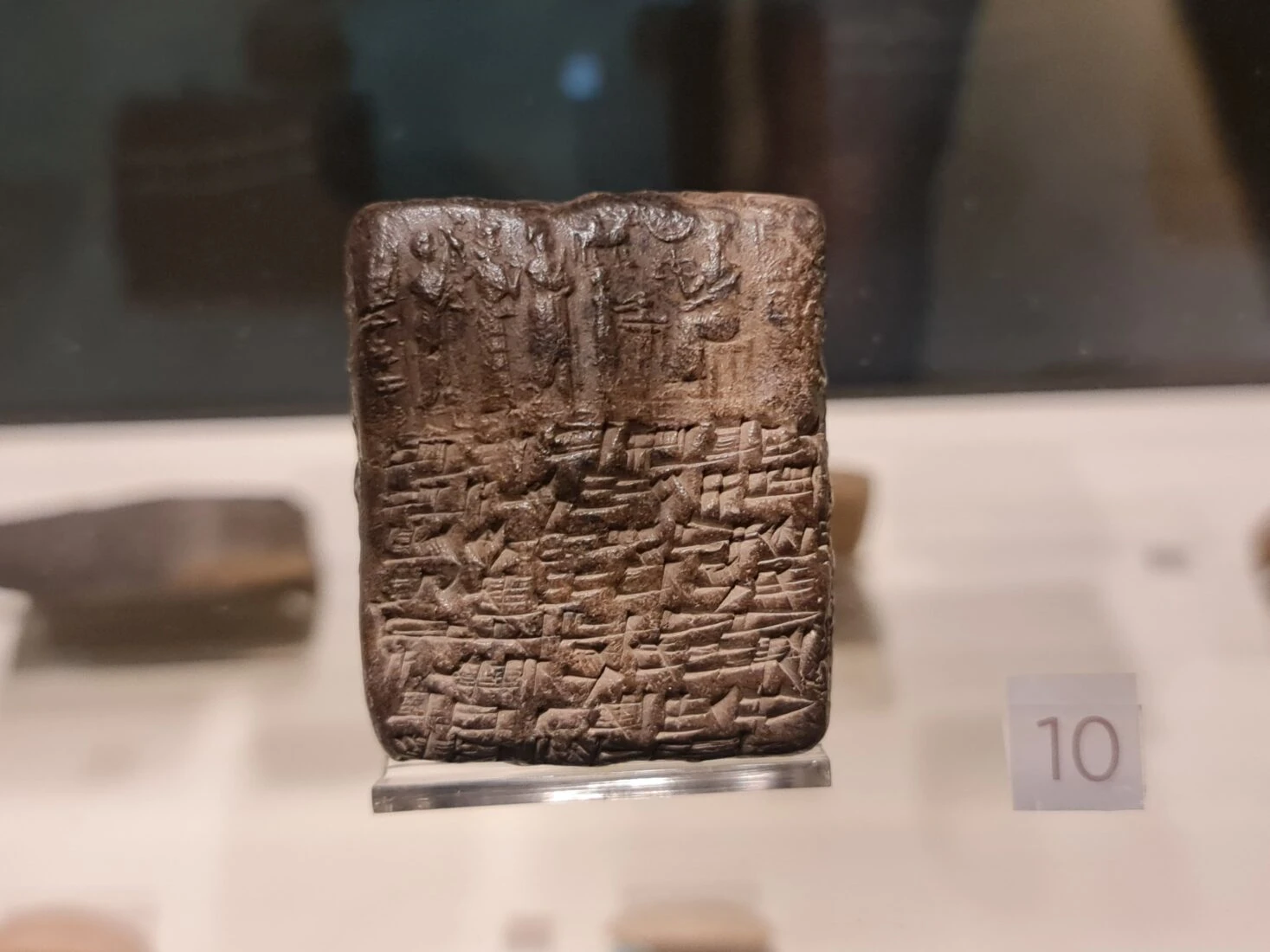
Cuneiform tablets— a hybrid of hieroglyphics and modern writing— are housed at the museum. The tablets on display come from the museum’s late Bronze Age’s Kultepe (Kanes) settlement in Kayseri province. The tablets are in the Indo-European language (referred to as Nesa or Nesili) used by the Hittites.
A unanimous source at the museum commented that during the 1940s, the Germans stole roughly 30,000 cuneiform tablets from Türkiye under the false pretext that they had better technology to decipher them with the promise they would be returned.
A multitude of cuneiform tablets, mainly in the U.K., Europe, and the U.S., are pending repatriation to Türkiye.
The subject matter of the cuneiform tablets includes:
- Letters
- Records
- Verdicts
- Treaties
- Property and business deals
- Water allocations
- Marriage certificates
- Slave certificates
- Divorce certificates/divorce settlements
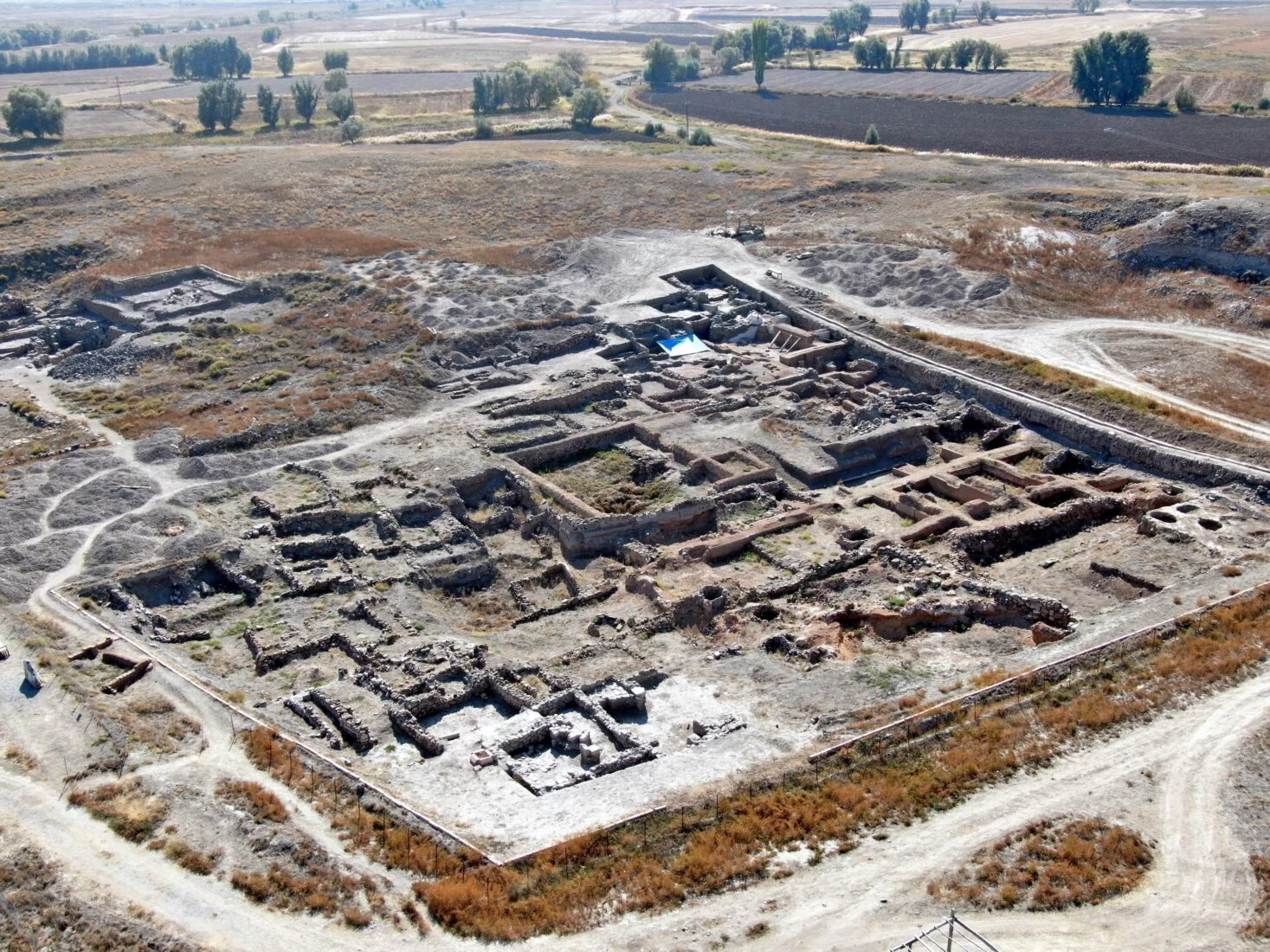
7) Coins
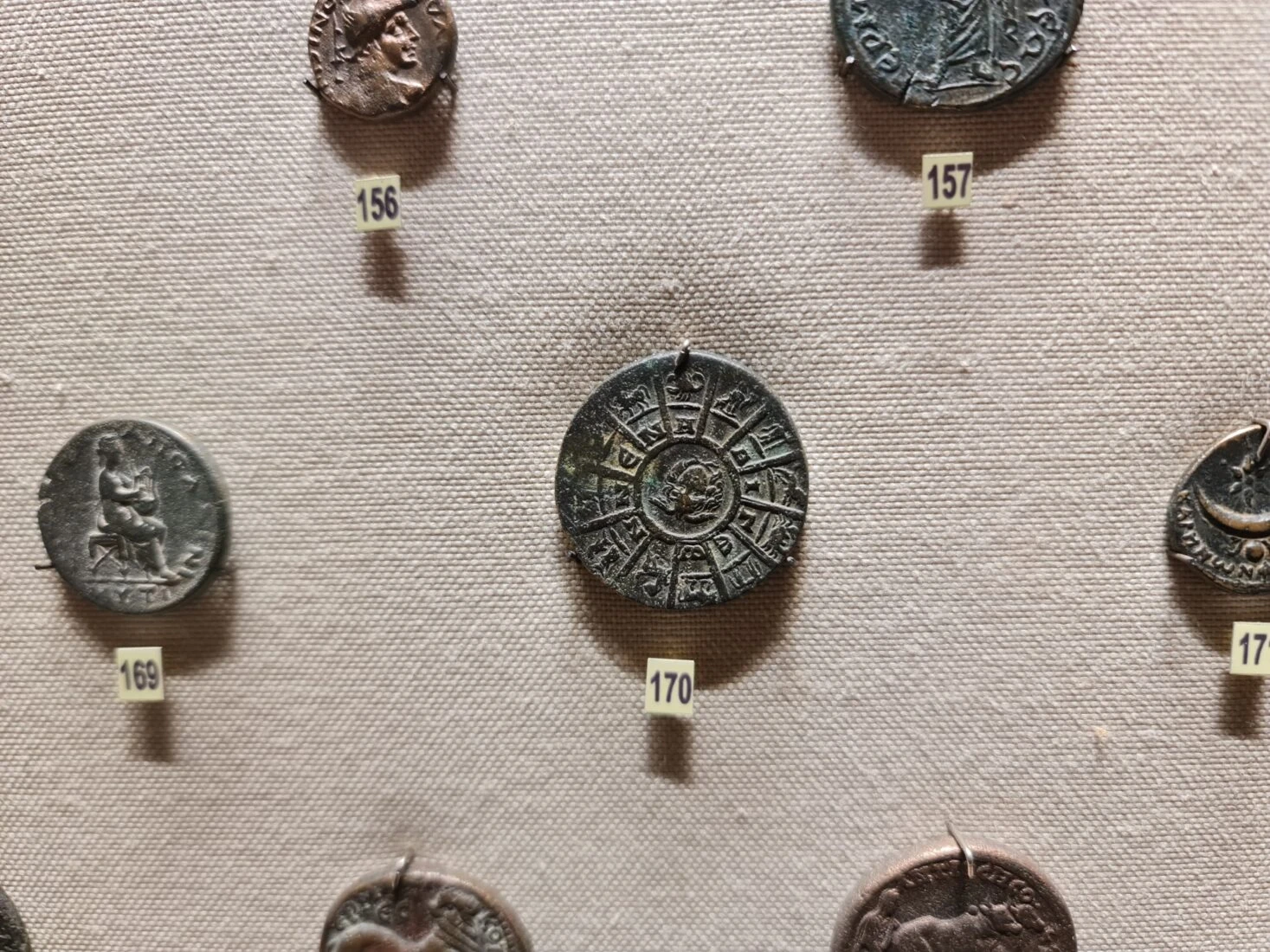
The museum displays a large collection of coins spanning across centuries and civilizations. Of various alloys, shapes and sizes, these all showcase intriguing depictions of former rulers, mythical creatures, animals, and other visuals—some yet to be deciphered.
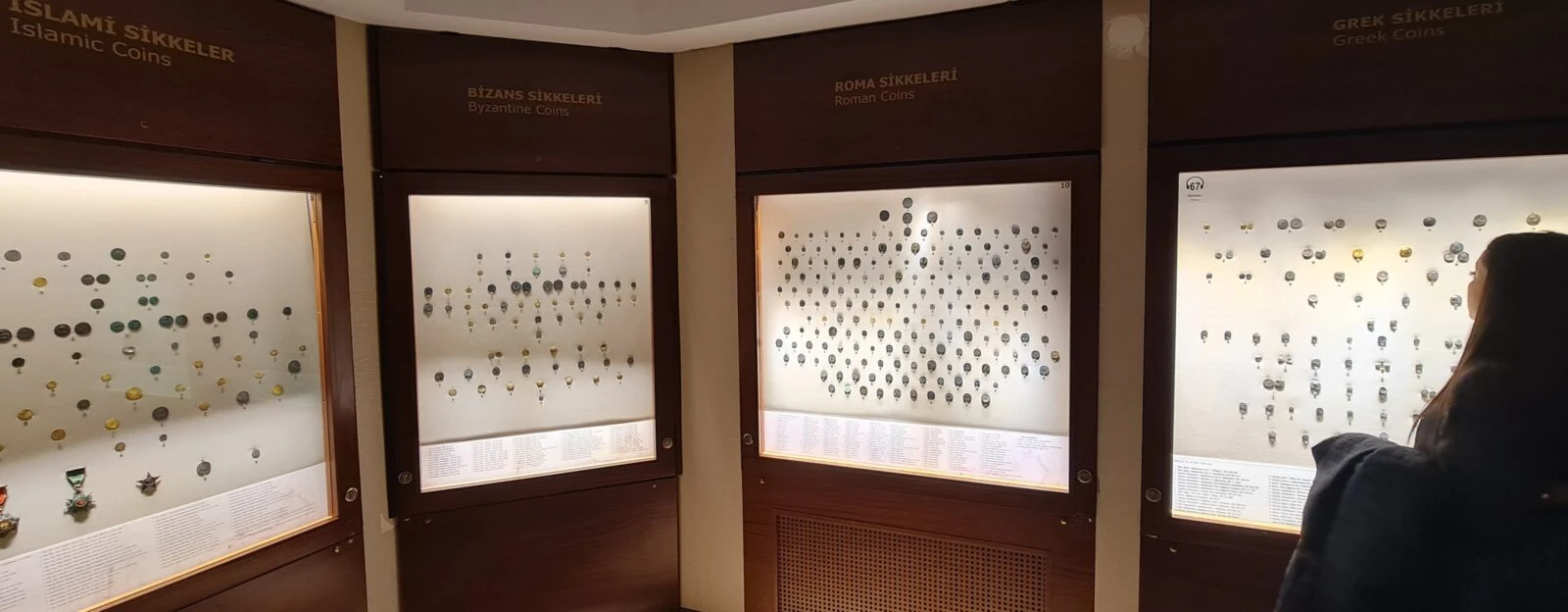
8) Phrygians: Gordion and King Midas
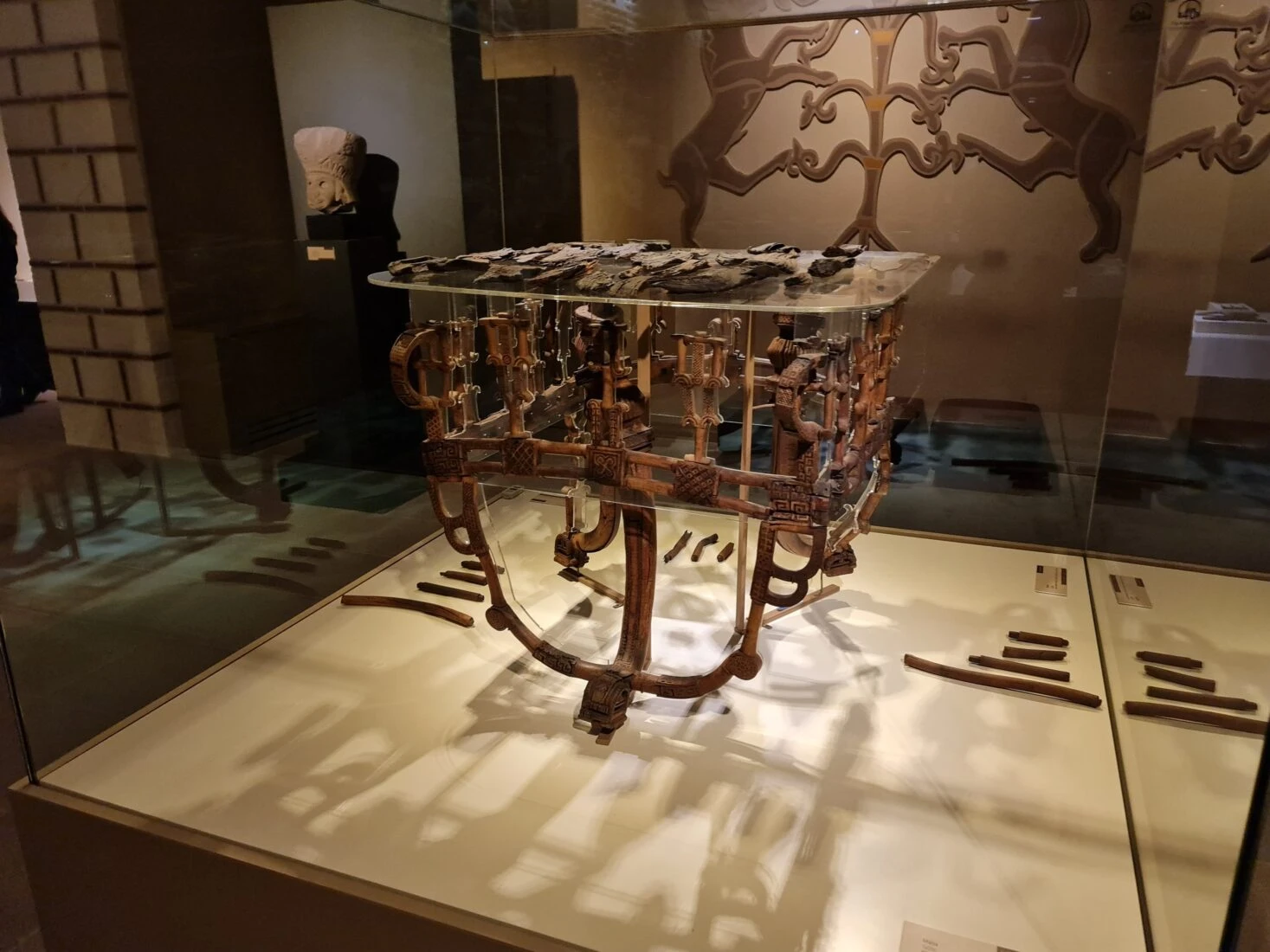
One of the most exciting corners of the museum is the finds from the excavations that occurred at the ancient capital of the Phrygian Empire, Gordion which houses the tomb of King Midas.
Less than an hour’s drive from the Turkish capital Ankara is where the stories of “King Midas touch” and “the knot of Gordion” emerged. Gordion served as the capital of the Phrygian Empire (1200–675 B.C.E) during the Iron Age.
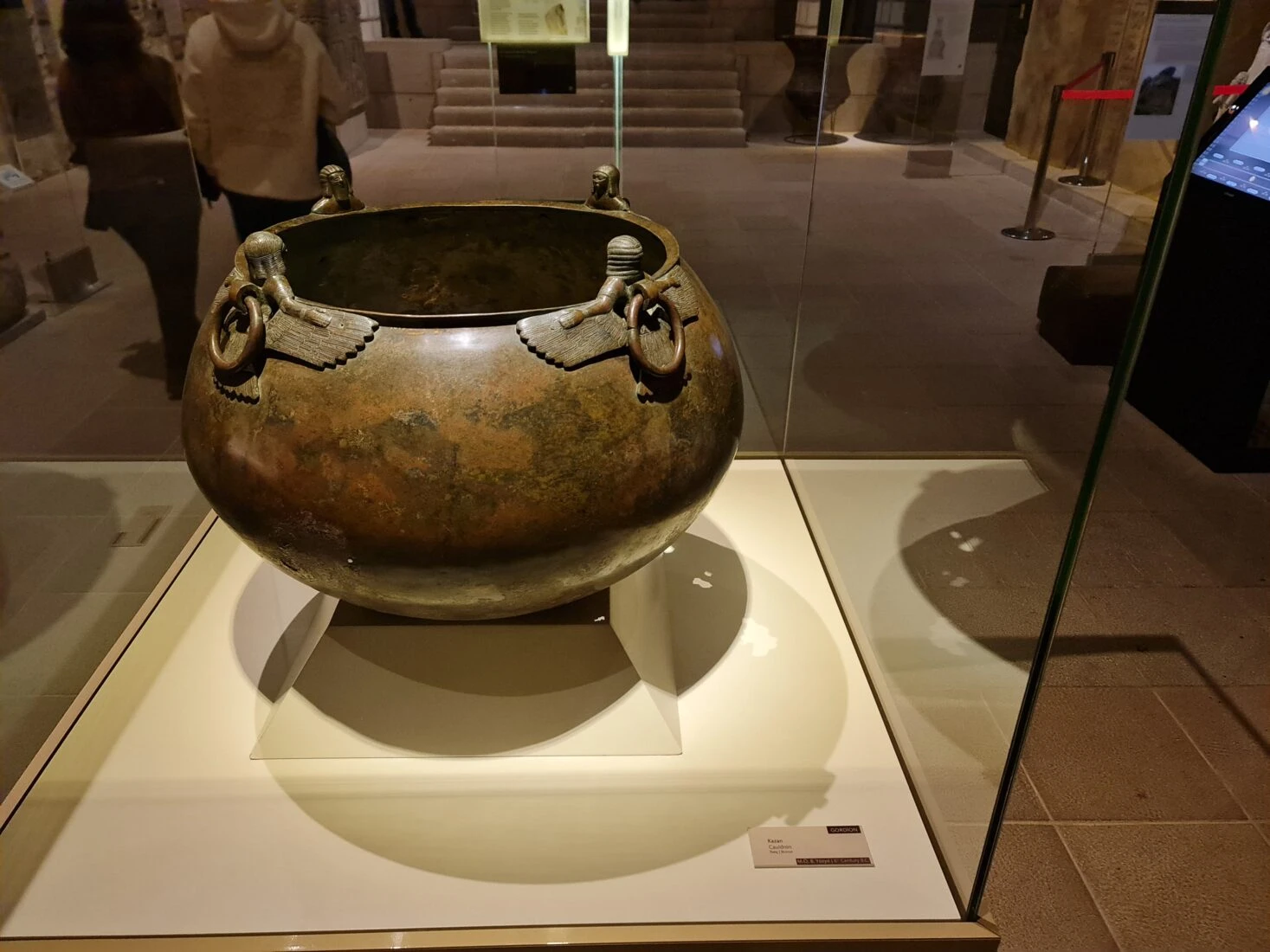
In 333 B.C.E, a young Alexander the Great entered Gordion and slashed the famed knot of Gordion with his sword, marking the prophecy that whoever untied the knot would rule over Asia.
Perhaps most intriguing are the wood furniture or other wooden items found at the tomb of Midas; carefully preserved wood items that stretch back centuries are of the hardest of finds.
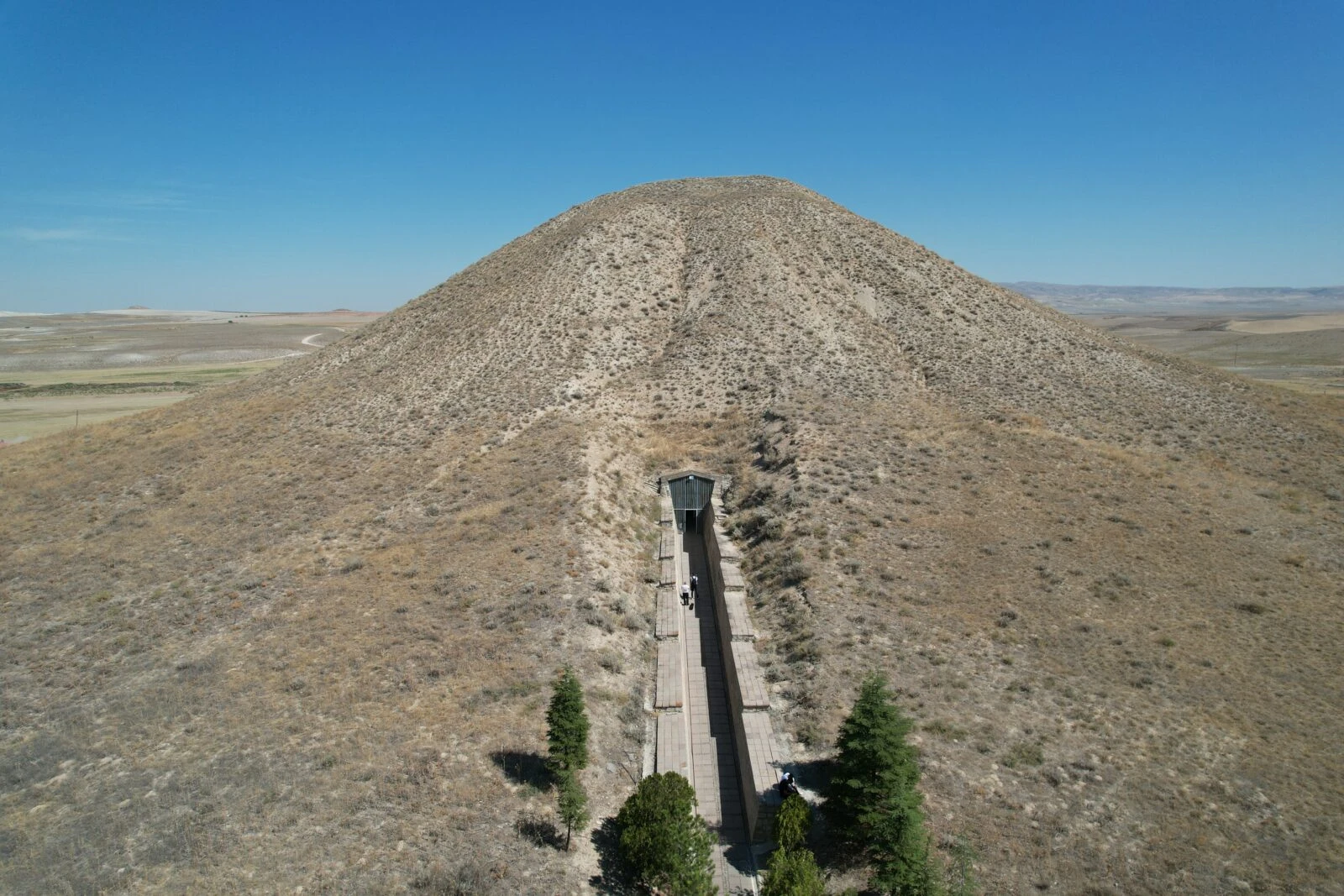
9) Bronze Statues—Hellenistic, Roman periods
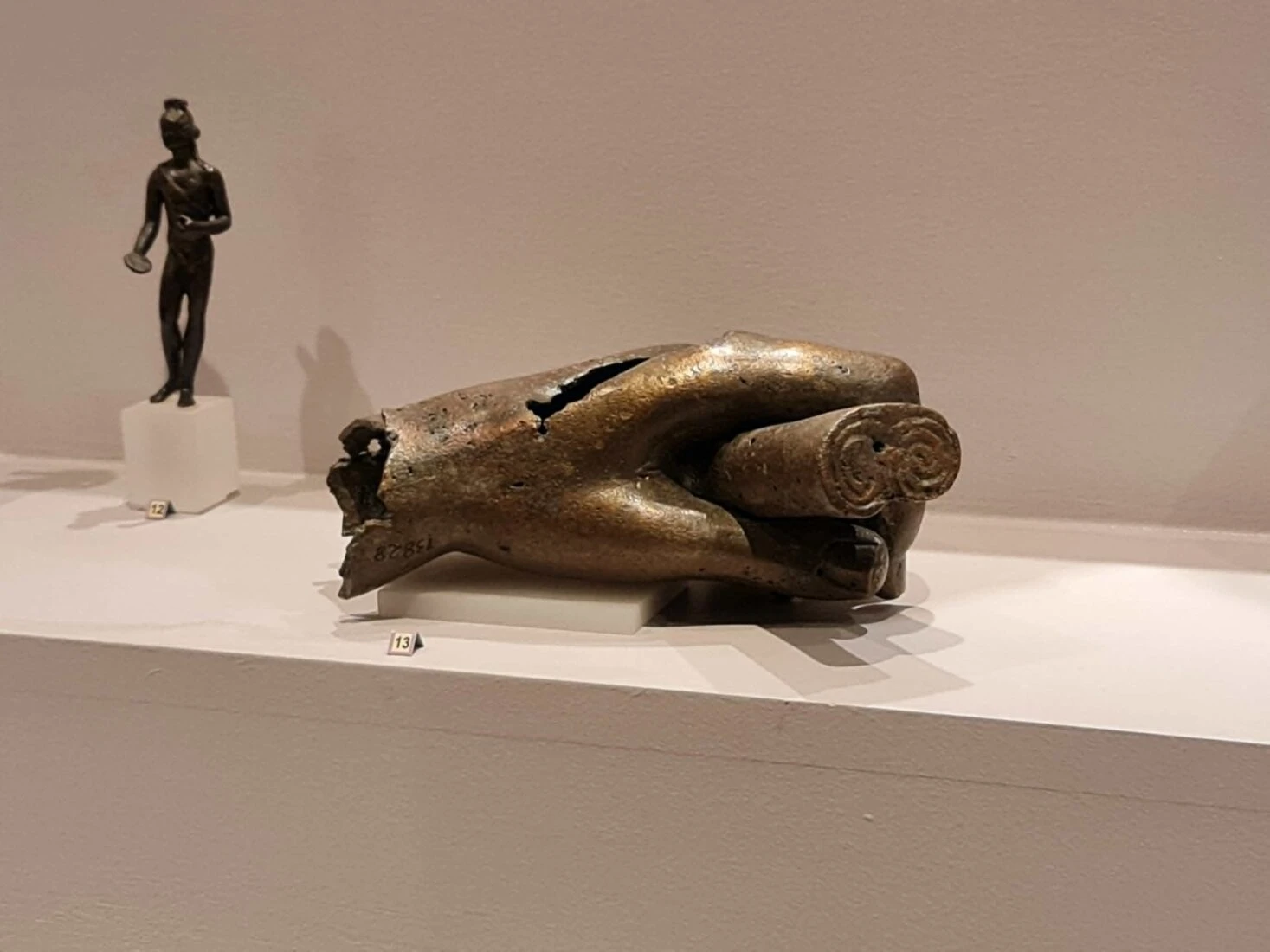
The museum houses several unique bronze statues from the Hellenistic and Roman periods. Bronze statues are rare due to the reuse of metals for repurposing or destruction because of corrosion.
Limited in numbers, the bottom floor of the museum houses several unique bronze statue examples.
10) The Epic of Gilgamesh
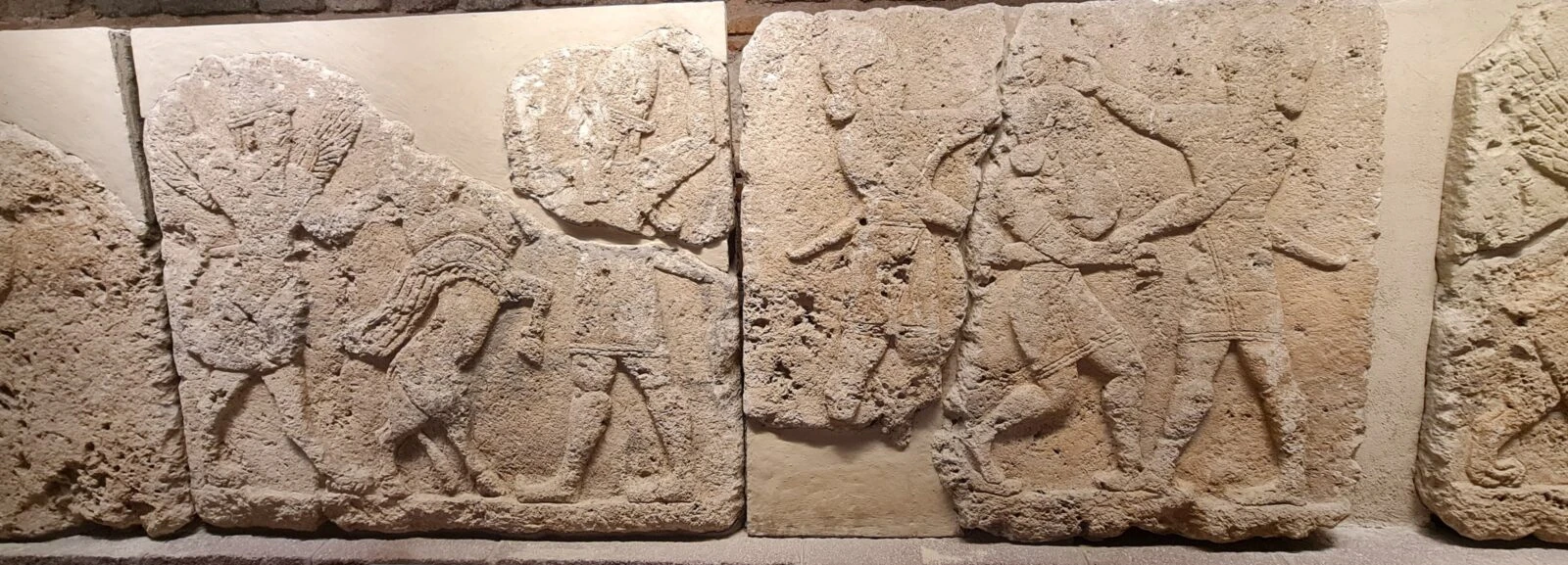
In the main hall is a set of stone reliefs narrating the ancient poem known as the Epic of Gilgamesh. The poem is believed to be the oldest known written story recorded by mankind.
Found originally on Sumerian cuneiform texts, the oldest written versions of story date back to 2,000 B.C.E. The poem follows the godlike ruler Gilgamesh’s life. Fascinating as this poem, as is the case with numerous ancient texts, references the ancient great flood.
